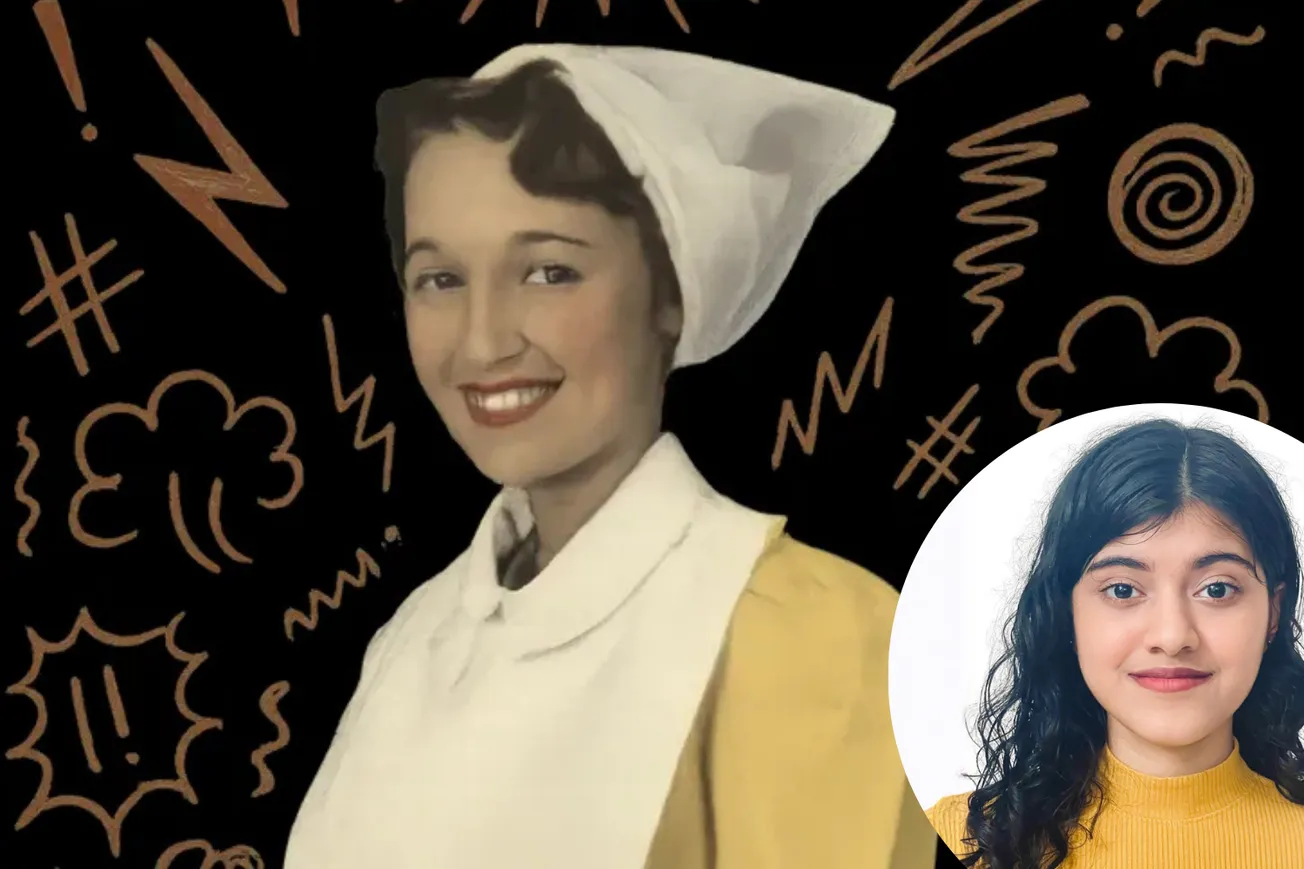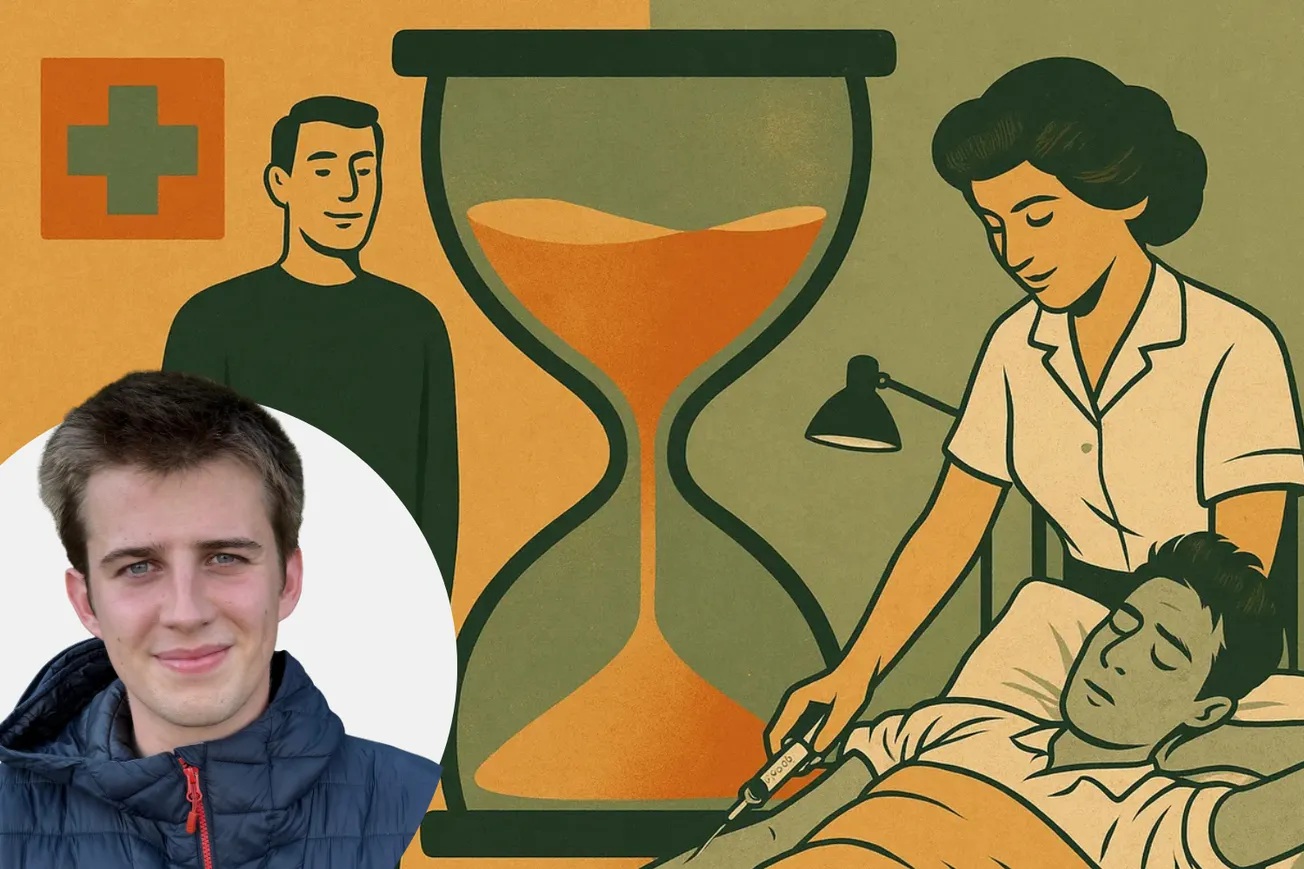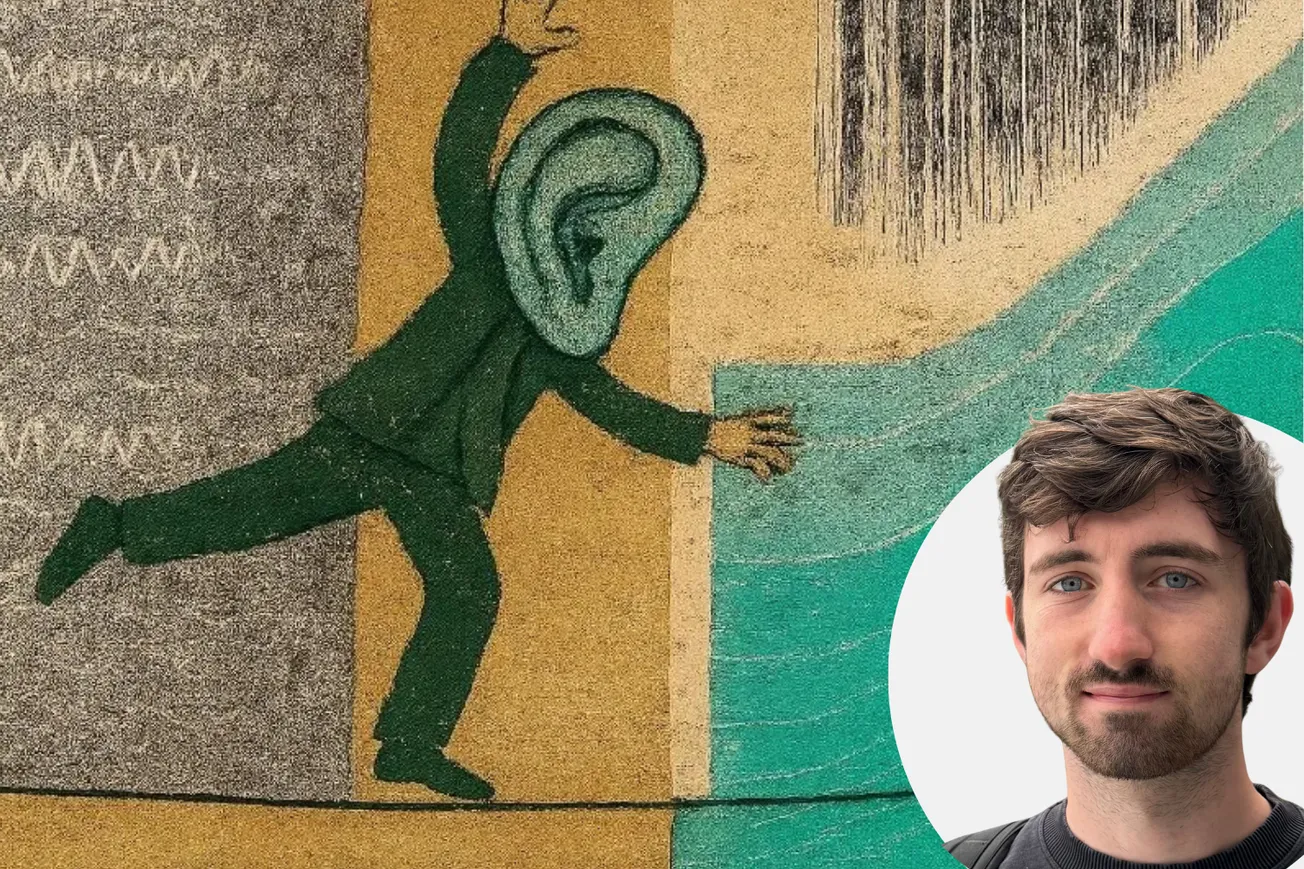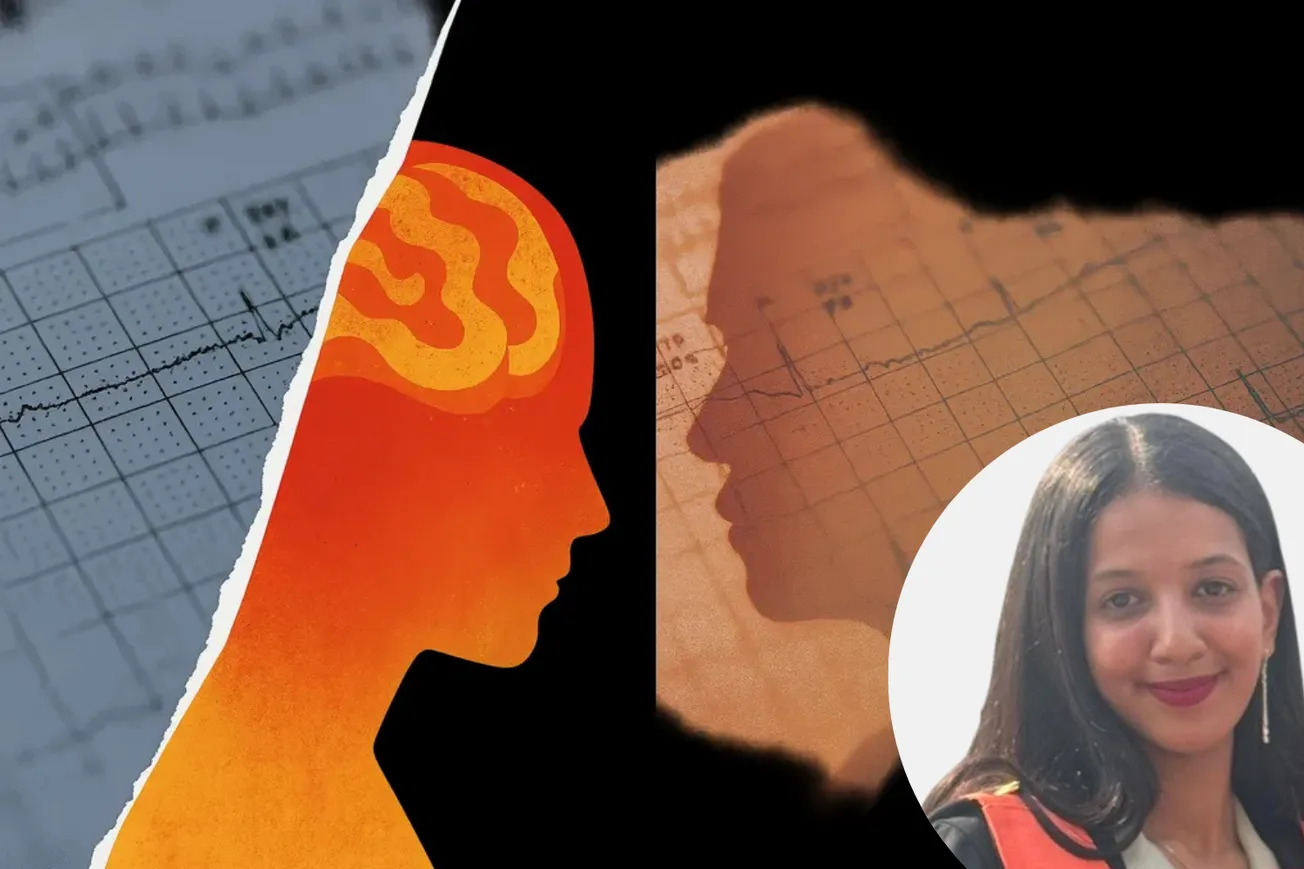Table of Contents
Suzanne had only planned a standard shift, but when a colleague called in sick, she stayed on. Long hours, skipped meals, barely a sip of water — and by the end, the ward’s bleeping monitors felt deafening, the lights far too bright. A throbbing migraine settled in, but she pushed on.
For many NHS staff, that’s just the rhythm of the day. In that routine, headaches and migraines are brushed off as part of the job. But for healthcare workers, those symptoms often carry something deeper: the quiet signs of stress, fatigue, and burnout. And the fact that we treat them as normal says something about how we view wellbeing in medicine.
Tension headaches and migraines are among the most common neurological complaints worldwide — and yet, within NHS staff, they’re practically invisible. There’s an unspoken rule in healthcare: look after others, not yourself. So when discomfort shows up, it’s either downplayed or ignored. The focus stays on patients. This means symptoms go underreported, and over time, become the norm.
Headaches as the Hidden Cost of Care
A recent study of NHS nurses and nursing leads found that 94.25% of nurses and 82.08% of chief nurses had worked while unwell in the previous six months — a pattern known as presenteeism (1). These numbers are more than just statistics; they reflect a culture where the line between resilience and self-neglect is worryingly thin. In that environment, even recurring headaches can be a red flag we’ve learned to ignore.
New research is showing how chronic headaches don’t just reflect physical strain — they can actually deepen emotional stress. A 2024 model of burnout in healthcare professionals found that frequent headaches can worsen something called cognitive fusion — where people become overly entangled in their thoughts and self-judgements (2). That mental loop makes it harder to step back from stress at work, pulling clinicians into a cycle of anxiety and burnout. In other words, the pain in your head isn’t always just in your head.
And yet, silence remains the default. The Royal College of Surgeons has described a “culture of toughness” in medicine, where pain is treated as a badge of honour and asking for help is quietly frowned upon (3). That pressure doesn’t always come from others — it’s often self-imposed. Many healthcare staff, especially younger ones, internalise the idea that if they just work harder, the discomfort will pass. But it doesn’t always.
Even official policies can reinforce this mindset. In a notable employment tribunal, an NHS Trust was found to have acted unreasonably by penalising a staff member for migraine-related absences. The court noted that the Trust had failed to adjust attendance targets for someone managing a chronic condition (4). It was a wake-up call: even well-intentioned systems can end up punishing people who are simply trying to cope.
From Stigma to Support
But it’s not all bleak. There are practical, evidence-based ways forward. Organisations like the Migraine Trust and the Work Foundation have outlined several workplace changes that could make a real difference for staff with frequent headaches (5). These include offering flexible shifts or remote work where possible, allowing access to quiet rest areas during shifts, making sure food and hydration breaks are protected, supporting time off for medical appointments, and encouraging referral to occupational health services. Environmental changes can help too — such as improving ventilation, adjusting lighting to reduce screen glare, and providing options for dimmer workspace settings. More importantly, a shift in leadership culture — through one-to-one check-ins, active listening, and wellbeing-focused supervision — helps build a workplace where discomfort can be expressed without guilt or stigma.
This kind of approach fits into what’s called high performance working practices — a framework based on shared responsibility, autonomy, manageable workloads, and strong social support. In healthcare, these principles don’t just reduce burnout; they improve retention and quality of care (5).
But cultural change always takes longer than policy change. And that’s where reflection matters — especially for those of us just starting our medical careers. In our training, we’re told to prioritise patient care above all else. But part of becoming a good doctor is learning that care should include ourselves and each other. The pressure to appear unshakeable — to push through pain or downplay symptoms — doesn’t make us stronger. It just makes us quieter.
In our own circles, this culture creeps in early. During exam season, a friend once said, “I’ve had a headache every day this week.” We all laughed. None of us asked if she was okay — not even me. At the time, it felt normal. But now I wonder how early we start teaching ourselves to ignore pain — and how long we carry that habit into our clinical lives.
We need to change how we interpret those signals — headaches, fatigue, silence. They’re not just minor inconveniences; they’re messengers. And if we don’t listen, we risk losing the very people we depend on to keep the system going.
Protecting healthcare workers from the long-term impact of burnout isn’t just about kindness — it’s about strategy. A healthy workforce is a safe workforce. And small symptoms, like headaches, are often the first alarm bell. When those go unheeded, the costs ripple outward: to staff morale, patient safety, and the future of the NHS itself.
So maybe the next time a colleague winces under fluorescent lights or rubs their temples mid-shift, we can pause before moving on. Ask how they’re doing. Offer a moment of empathy. Even small acts of awareness help shift the culture away from silence — and toward something more human.
In the end, healing isn’t just about diagnosis and treatment. It’s about attention. And that includes paying attention to the people doing the healing, so that no more Suzannes have to pay the price of their health in service of others.
References
1.
Dall’Ora C, Ball J, Redfern O, Recio Saucedo A, Griffiths P. Are long nursing shifts on hospital wards associated with sickness absence? A longitudinal retrospective observational study. J Nurs Manag. 2020;28(1):124–30.
2.
González-Castro JL, Ubillos Landa S, Martínez-Zaragoza F, et al. A model to explain the chronification of anxiety in burnout through cognitive fusion, using the presence of chronic headaches as a moderating variable. Int J Environ Res Public Health. 2024;21(4):764. doi:10.3390/ijerph21040764
3.
Royal College of Surgeons. Avoiding the performance trap: Supporting doctors with health problems. RCS Report. 2021. Available from: https://www.rcseng.ac.uk
4.
Employment Tribunal Judgment. Case No: 2410812/2018. Available from: https://www.gov.uk/employment-tribunal-decisions
5.
Migraine Trust & The Work Foundation. Migraine triggers and support measures. Novartis Pharmaceuticals UK Ltd; 2019. Available from: https://migrainetrust.org
Author: Anahad Kaur Hanspal is a second-year student, reading for an MBBS in Norwich Medical School at University of East Anglia.






